This article contains media talking points and a letter template that can be used to share results.
Effectively communicating lead sampling results and remediation efforts is crucial for maintaining transparency and trust within the community. Below are key discussion points for engaging with the media and a template letter for informing parents about lead sampling results.Media Discussion Points
The following information is useful for addressing the broader community and media about lead sampling findings:
- Context: In response to national concerns, [School-District/Facility Name] has conducted water-sample testing on [number] fixtures that are potential sources of drinking water or used for food preparation in our schools/facilities.
- Source of Lead: Lead in tap water generally originates from the corrosion of interior plumbing fixtures and materials containing lead, rather than from the municipal water supply. The issue is specific to identified fixtures and will be rectified according to the remediation plan.
- Voluntary Testing Program: These fixtures were tested as part of a voluntary state program available to all Indiana public schools and child care facilities.
- Lead Action Level: An elevated lead level is defined as a reading that meets or exceeds the U.S. Environmental Protection Agency’s (EPA) action level of 15 parts per billion (ppb). This level is a trigger for action, not an indicator of health effects.
- Results Overview:
[Percentage] of tested fixtures did not exceed the EPA’s action level.
[Number] fixtures exceeded the EPA’s action level of 15 ppb. - Actions Taken: Specific actions have been taken to address the affected fixtures, ensuring compliance with state and federal recommendations. Examples of actions include shutting off water to the fixtures, installing signs, replacing fixtures, and retesting to confirm resolution.
Parent Letter Template
Below is a customizable template for informing parents about the lead sampling results:
[SCHOOL/CHILD CARE LETTERHEAD]
[DATE]
Dear [SCHOOL/CHILD CARE NAME] Parents,
The [NAME OF SCHOOL DISTRICT/CHILD CARE FACILITY] recently participated in a voluntary State program to test our schools’/child care facility’s drinking water for lead. This program was offered to all [STATE] public schools and child care facilities and specifically tests water fixtures that provide drinking or cooking water to students.
In our school system/child care facility, a total of [NUMBER] fixtures were tested. [PERCENTAGE] of those fixtures did not present lead levels that exceed the U.S. Environmental Protection Agency (EPA)’s action level of 15 parts per billion (ppb).
However, [HOW MANY] fixtures did present lead levels that exceed the EPA’s action level. The action level of 15 ppb is not a measure of health effects; it serves as a signal for the school/child care facility to take steps to reduce lead in the water. Lead found in tap water typically comes from the corrosion of interior plumbing fixtures and materials that contain lead, not usually from the municipal water supply. The issue is specific to the identified fixtures and will be addressed by the remediation plan.
The fixtures of concern are located in [WHICH SCHOOLS/CHILD CARE FACILITIES WHERE].
We have taken one or more of the following actions to address this situation:
- Shut off the water to these fixtures
- Installed signs where applicable indicating these fixtures are for hand-washing only
- Replaced the fixtures
- Completed tests again to ensure the problem has been resolved
If you would like a copy of the complete testing results or more information about the findings, please contact our office at [EMAIL/PHONE NUMBER] Monday through Friday [TIMES].
Sincerely,
[PRIMARY CONTACT NAME]
[TITLE]
These media discussion points and the parent letter template are designed to help schools and child care facilities communicate effectively and transparently with their communities regarding lead sampling results. By providing clear, consistent information, schools and child care facilities can reassure parents and the community that they are taking proactive steps to ensure water safety.
